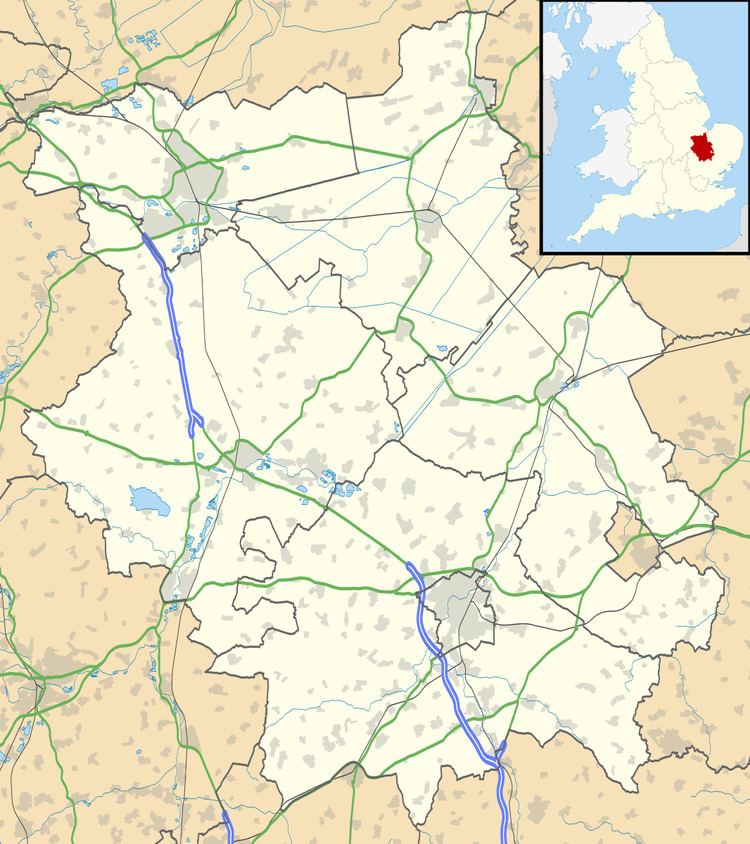Type Tomb Excavation dates 2011 | Periods Anglo-Saxon Excavation date 2011 | |
 | ||
Location | ||
The Trumpington bed burial is an early Anglo-Saxon burial of a young woman, dating to the mid-7th century, that was excavated in Trumpington, Cambridgeshire, England in 2011. The burial is significant both as a rare example of a bed burial, and because of the ornate gold pectoral cross inlaid with garnets that was found in the grave.
Contents
The Fitzwilliam Museum in Cambridge has indicated that it wishes to acquire the pectoral cross once it has been valued by the Treasure Valuation Committee.
Description
The occupant of the grave was a young woman, aged about 16, who was buried lying on a wooden bed (now decayed, but identifiable from its iron brackets). She was buried with a number of grave goods, including an iron knife, a chatelaine, and some glass beads that perhaps originally decorated a purse. Most notably, an ornate gold pectoral cross was found on her breast. The small cross, only 3.5 cm across, is inlaid with garnets, and would have been sewn onto the robe that she was wearing, as indicated by loops on the back of each arm of the cross.
Archaeological context
The bed burial and three other Anglo-Saxon graves were discovered in summer 2011 as part of a series of archaeological excavations carried out by the Cambridge Archaeological Unit of the University of Cambridge in Trumpington Meadows, on the outskirts of the village of Trumpington, within the city of Cambridge, prior to the redevelopment of the land for housing. The excavations uncovered a variety of features from a long period of time, including two long barrows dating to the early Neolithic, a double burial dating to the Beaker culture, and an Iron Age settlement. The Anglo-Saxon graves and other Anglo-Saxon features, including sunken floored buildings, were discovered in a field north of the meadows. Of the three other graves, two were also of young women, but none of them were bed burials or contained any grave goods. It is thought that the buildings and graves must be associated with a settlement, perhaps a monastic community, although no early Anglo-Saxon settlement was previously known to exist at Trumpington. Examples of 7th-century religious foundations for royal women include Barking Abbey, Essex for Saint Ethelburga and Minster Abbey, Kent founded for Saint Ermenburga.
Significance
A small number of bed burials, no more than a dozen and mostly of women, are known from the Anglo-Saxon period, but they are comparatively rare. Other sites where bed burials have been excavated in recent years include Coddenham in Suffolk, Collingbourne Ducis in Wiltshire, and Loftus in North Yorkshire.
Anglo-Saxon jewelled gold pectoral crosses are also very uncommon, with only five similar examples known, including one on St Cuthbert's coffin. It is probable that the owner of this cross was a member of the Anglo-Saxon nobility or possibly even a member of one of the royal families. The only previously known case of a bed burial with a pectoral cross, discovered in the 19th century at Ixworth in Suffolk, was poorly documented, which makes this discovery particularly significant.
The cross indicates that the occupant of the grave was a Christian, but she was also buried with secular grave goods that are more indicative of the pagan tradition, and so the grave may date to a period of transition from paganism to the adoption of Christianity by the Anglo-Saxon ruling class.
